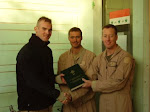By FR. KEVIN M. CUSICK
Around this time of the year our parishes begin planning their Christmas schedule of Masses. As with the weekly vigil of Sunday Mass on Saturday evenings, more and more people gravitate toward the vigil of Christmas and away from the Church’s custom of celebrating at midnight on Christmas Eve and at Christmas Dawn and Day.
If the vigil is seen as a convenience, does liturgical observance of Christmas on Christmas Day come to be deemed by default as an “inconvenience” by those, especially our young people, who observe this practice? Does Christmas Day itself become devoid of mention of the Lord or prayerful recognition of His incarnation among us? Celebration of the Lord’s birth should never be portrayed as a less attractive component of family Christmas customs, but must be observed as the centerpiece of the whole. This is best done by attending Mass to celebrate Christmas on the Feast of Christmas, which begins during the night of December 25.
The first to receive the news of the Savior’s birth were shepherds “in that region living in the fields and keeping the night watch over their flock.” A star, visible only in the night sky, announced His birth. Christ was born at night and the Church’s liturgical celebration of this fact is scriptural.
Many people see a disconnect between our Catholic faith as expressed in the liturgy, for example, and the Scriptures. This is a longstanding issue, but one that we must acknowledge and work to overcome. In truth it should never be so. This is so to some degree because liturgical abuses have crept into Catholic practice since Vatican II and corrections have been rejected for “pastoral reasons.” Is it truly pastoral to allow our people to continue to languish spiritually under the false impression that the Catholic Church is not scriptural, that she does not follow the Bible? More and more people are leaving the Church for these reasons, false as they are. It should not be this way, one reason for which is that the liturgies of the Church and the Scriptures both came from the same source: the Revelation in Christ of the one true God and the people He formed as the Church under the guidance and in the life of the Holy Spirit.
One of the ways that we can work to overcome the seeming divide between the Jesus of the Bible and the Jesus of the life of the Church is to actually look at the Church’s custom or tradition in celebrating a particular feast, having been handed down along with the word of Scripture proclaimed in the liturgies of the selfsame Church. When we do this for Christmas, we see that the Church’s intention is that we celebrate Christmas at midnight, dawn, and day. A look at a Sacramentary will establish this. The reason for this custom is that the Bible tells us that Christ was born at night, after Mary and Joseph sought lodgings at the end of the day’s travel.
The movement for vigils came out of the pastoral concern of the Church for people who had to work on the day of a feast and for whom the obligation to attend Mass would be impossible to fulfill unless a vigil was offered. The usual custom of the Church is that vigils begin no earlier than 5:00 p.m. on the evening before a feast or solemnity.
All of our children know that they cannot celebrate their birthdays meaningfully until the day of the birthday anniversary itself. They would readily tell you this because they know through family witness, their birth certificate, and custom itself, that they were in fact really and truly born on a particular date in history and to celebrate before that anniversary date would evacuate such a celebration of all of its intended meaning.
Celebrating the vigil of Christmas during daylight on what is technically still Christmas Eve has become very common. Doing so strains for us and our children the historic nature of the birth of Christ at night as our faith demands that we celebrate, but it can be done with a lot of good “homiletic gymnastics” as I have been doing for 18 years.
Christmas begins with the praying of evening prayer on Christmas Eve, usually around 5 pm. In some places the vigil is moved up to 4:00 p.m. without a grave reason for doing so and against universal custom. Observing the vigil of Christmas at a time that is technically still liturgically on December 24 is stretching credulity perhaps a bit too far.
The liturgical vigil is a spiritual reality that is lived by the universal Church and observing it serves communion with the Church at the local level. I pray that these ideas will resonate with the very sincere concerns we all share for the faith and pastoral good of our people.
(Visit Meeting Christ in the Liturgy daily at for teachings from the Catechism of the Catholic Church paired with the Scriptures of Holy Mass for every day of the week. Fr. Cusick blogs at A Priest Life and you can e-mail him at mcitl DOT blogspot DOT com AT gmail DOT com.)
Children Go Where I Send Thee – A Homily for the 5th Sunday of the Year
-
This Sunday’s Gospel describes the call of Simon Peter, one that takes
place in several stages. While it is presented in a compact time frame, for
most o...
1 month ago











No comments:
Post a Comment